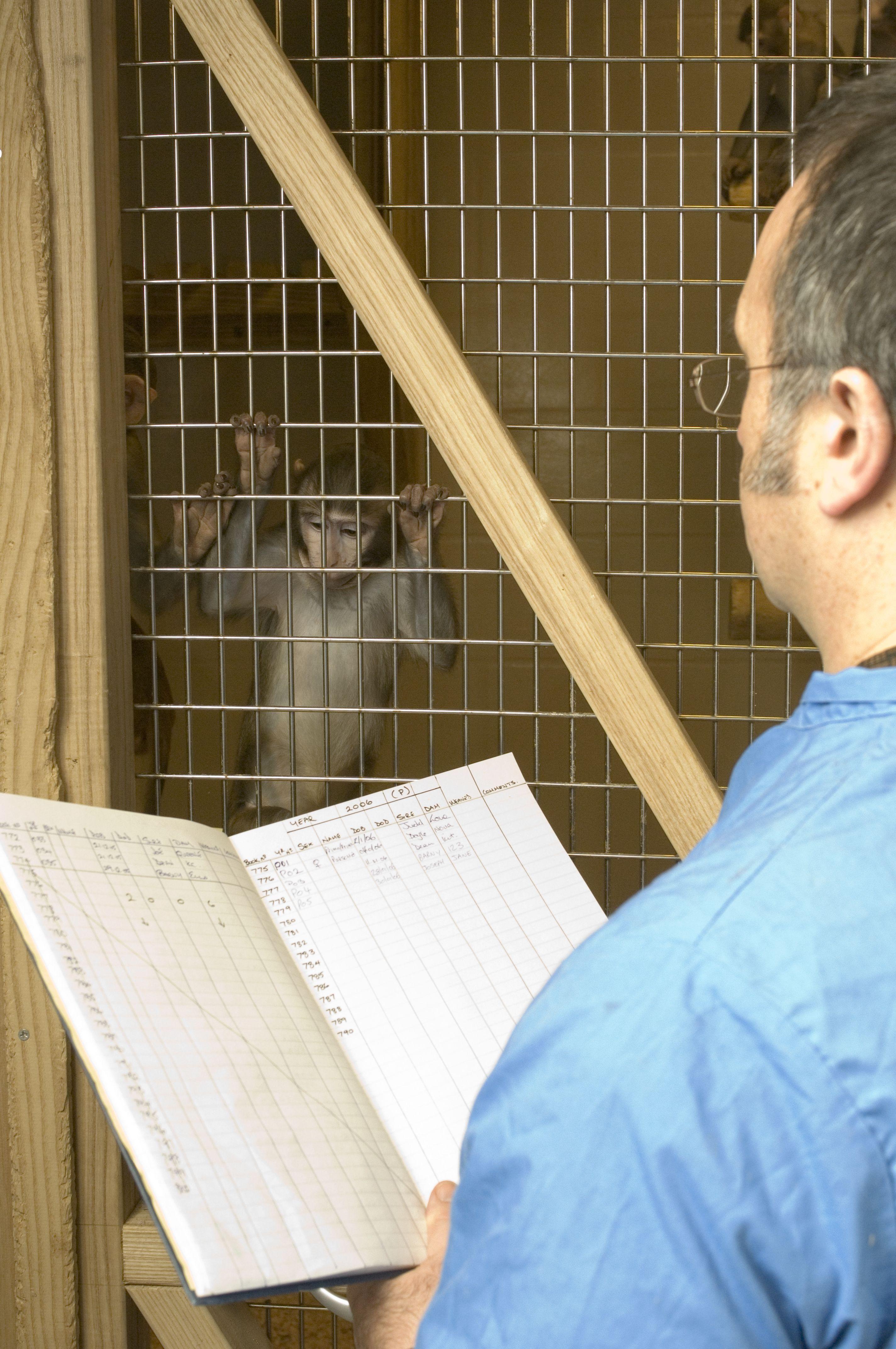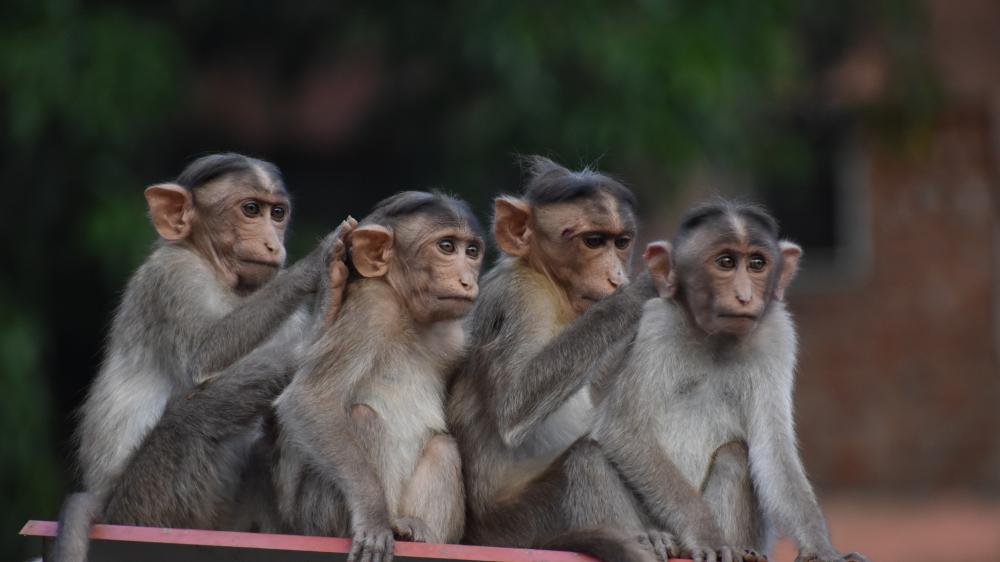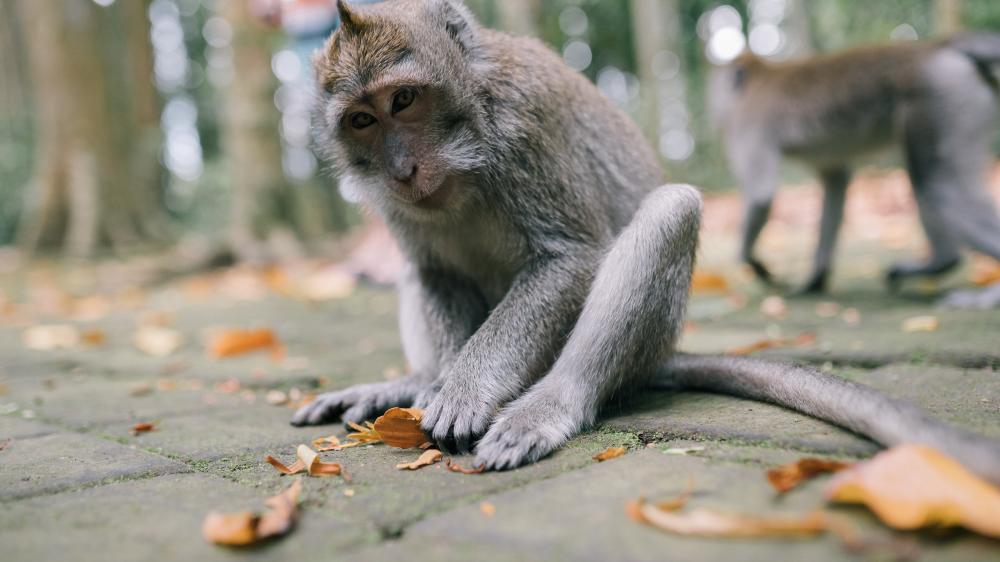Welfare assessment
Animal welfare is about preventing suffering and ensuring a good quality of life the animals under the care of humans. This requires attention to both the physical and psychological needs of animals [1-3], such as providing a high standard of housing and veterinary care, opportunities to express species-specific behaviours and to engage in social interactions, and the removal of any causes of unnecessary pain, fear or distress [4].
Monitoring the welfare of laboratory macaques is essential for identifying individuals at risk of poor welfare, and for evaluating the impact of research or husbandry practices, plus any management interventions aimed at refining these. Establishing an effective welfare assessment scheme will benefit both animals and staff (see below).
Understanding baseline or normal good health and psychological well-being, for both the species and individual animals, is essential for recognising when welfare has been compromised [5]. A comprehensive welfare assessment scheme will include multiple measurements [5,6] including behavioural indicators, physiological indicators and health indicators such as clinical signs. Triangulation using a combination of measures collected at the same point in time can give the best assessment of welfare state [7].

Benefits of an effective welfare assessment scheme
- Save time: Early detection of compromised welfare, or incipient problems, allows prevention rather than cure of pathologies. Plus animals with good welfare are more easily trained to cooperate with veterinary, husbandry and scientific procedures.
- Save money: Animals with good welfare require less veterinary care.
- Improve quality of science: Animals with good welfare perform better on cognitive/behavioural tasks, work more efficiently and produce less noisy data; in some cases, this can lead to reduction of the number of animals needed.
- Improve safety: Healthy animals are less aggressive towards humans and conspecifics.
- Benefit staff and animals: The above benefits will lead to reduced stress and a better working environment for both animals and staff.
Integrated welfare assessment framework for macaques on toxicology studies
Tasker (2012) has developed a framework for assessing the welfare of juvenile cynomolgus macaques used in regulatory toxicology studies, and validated this for the assessment of improvements to housing and staff-animal interactions. Body condition and alopecia (see Health indicators) and facial expressions and vocalisations (see Behaviour) were found to be sensitive indicators of changes in welfare state associated with handling and restraint, and with alterations to the social group for study purposes. Fluctuations in body weight and changes in activity budget (e.g. overall pattern of activity, time spent in social contact), vigilance behaviour and position in the home pen proved to be useful indicators of whether the macaques were becoming accustomed to the laboratory environment during the pre-study acclimatisation period.
Types of assessment, measures, and their welfare interpretations
|
Type of welfare assessment |
Measure |
Welfare assessment location |
Welfare interpretation (positive or negative) |
|
Behaviour |
Broader repertoire |
Home pen |
Positive |
|
Behaviour |
Relaxed |
Home pen |
Positive |
|
Behaviour |
Exploratory |
Home pen |
Positive |
|
Behaviour |
Play behaviour |
Home pen |
Positive |
|
Behaviour |
Less night-time activity |
Home pen |
Positive |
|
Behaviour |
Narrower repertoire |
Home pen |
Negative |
|
Behaviour |
More time spent in conspecific contact |
Home pen |
Negative |
|
Behaviour |
Increased night-time activity |
Home pen |
Negative |
|
Behaviour |
Alert |
During handling (conscious, restrained) |
Positive |
|
Behaviour |
Relaxed face |
During handling (conscious, restrained) |
Positive |
|
Behaviour |
No vocalisation |
During handling (conscious, restrained) |
Positive |
|
Behaviour |
Fear grimace |
During handling (conscious, restrained) |
Negative |
|
Behaviour |
Loud harsh vocalisations |
During handling (conscious, restrained) |
Negative |
|
Physical |
Body weight stable, typical growth |
During health inspection |
Positive |
|
Physical |
Body condition score improving > 2 |
During health inspection |
Positive |
|
Physical |
Alopecia score is 0 (no hair loss) |
During health inspection |
Positive |
|
Physical |
Body weight fluctuating |
During health inspection |
Negative |
|
Physical |
Body condition score decreasing < 2 |
During health inspection |
Negative |
|
Physical |
Alopecia score >2 (increasing severity) |
During health inspection |
Negative |
|
Clinical |
Heart rate lower than normal |
During handling (conscious, restrained) |
Positive |
|
Clinical |
Blood pressure lower than normal |
During handling (conscious, restrained) |
Positive |
|
Clinical |
Heart rate higher than normal |
During handling (conscious, restrained) |
Negative |
|
Clinical |
Blood pressure higher than normal |
During handling (conscious, restrained) |
Negative |
In this section:
References
- Stamp Dawkins M (1998). Evolution and animal welfare. The Quarterly Review of Biology 73(3): 305-28.
- Stamp Dawkins M (2006). A user's guide to animal welfare science. Trends in Ecology & Evolution 21(2): 77-82. https://doi.org/10.1016/j.tree.2005.10.017
- Mendl M et al. (2010). An integrative and functional framework for the study of animal emotion and mood. Proceedings of the Royal Society B: Biological Sciences 277(1696): 2895-904. https://doi.org/10.1098/rspb.2010.0303
- Brambell FWR (1965). Report of the technical committee to enquire into the welfare of animals kept under intensive livestock husbandry systems. HMSO.
- Jennings M et al. (2009). Refinements in husbandry, care and common procedures for non-human primates. Laboratory Animals 43(1_suppl): 1-47. https://doi.org/10.1258/la.2008.007143
- Tasker L (2012). Linking welfare and quality of scientific output in cynomolgus macaques (macaca fascicularis) used for regulatory toxicology. In. Stirling.
- Webster J (2005). Animal welfare: Limping towards eden. Blackwell Publishing Ltd. https://doi.org/10.1002/9780470751107





